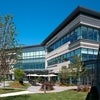Worcester's downtown office occupancy hits 5-year low
Biz district up and coming despite vacancy, boosters say
As of August, the occupancy rate of downtown Worcester's office real estate market had fallen to its lowest point in five years, according to a recent report by the Worcester Regional Research Bureau.
The office occupancy rate fell to 87.3 percent through August of this year, down from 89.4 percent in 2006, according to the report.
But commercial brokers in the "city on the move" denied that the downtown vacancy rate, which includes 80,000 empty square feet at the future City Square project, was a sign that the city is perhaps moving in the wrong direction. In fact, they said the rising vacancy rate is a sign that interest in downtown Worcester is on the rise.
Maybe next year
"Activity has remained strong, and occupancy is still pretty solid," said John McKinley, president of Worcester commercial and industrial broker Kelleher & Sadowsky Associates.
The market itself is strong, McKinley said, and because the downtown office market is so small, often one or two decent-sized deals can skew the vacancy rate up or down.
Peter Kovago, principal of Glickman Kovago & Co., another Worcester-based brokerage firm, agreed, noting that most moves within the central business district tend to be lateral. That is, people and companies moving to bigger or more convenient space within the same general area.
Kovago said downtown Worcester has been getting a lot of attention lately from companies interested in the area's value and future growth potential, but he would not say which companies have looked at the area, or where they were from.
Class B blues
Of note in the bureau's report is the poor performance of the city's Class B office space. Class B space, steadily declining for the past four years, was 86.6 percent occupied, according to the report, the second year in a row Class B space had the lowest occupancy rate in the city's office market. Class A and Class C space in downtown Worcester stood at 87.9 percent occupied.
In Worcester, Class A space leased for $12 to $27 per square foot, Class B for $6 to $30 and Class C for $8 to $15, according to the report.
Class B space represents somewhat older buildings or space that is in fair to good condition. Class A spaces are new construction or highly-desirable sites that often lease for well above the market median, while Class C space is older, basic functional space.
Kovago said the high cost of building out available Class B space makes it difficult to compete with Class A space that, once build-out costs are figured in, leases for similar rates and is often newer and in a better location than Class B space.
Tim McGourthy, Worcester's economic development director, said that historically the Worcester office market has been very stable, and the 2.5 percent dip is not much reason for alarm.
The up-tick in availability may actually allow the city to market a larger space to potential tenants, McGourthy said. The stability in the market rarely affords such an opportunity, he said.
Kimberly Hood, manager of the Center for Community Performance Management at The Research Bureau, said attracting more jobs to the central business district is critical to the area's eventual renewal. She said the report should be used to highlight the opportunities available in the area.









0 Comments